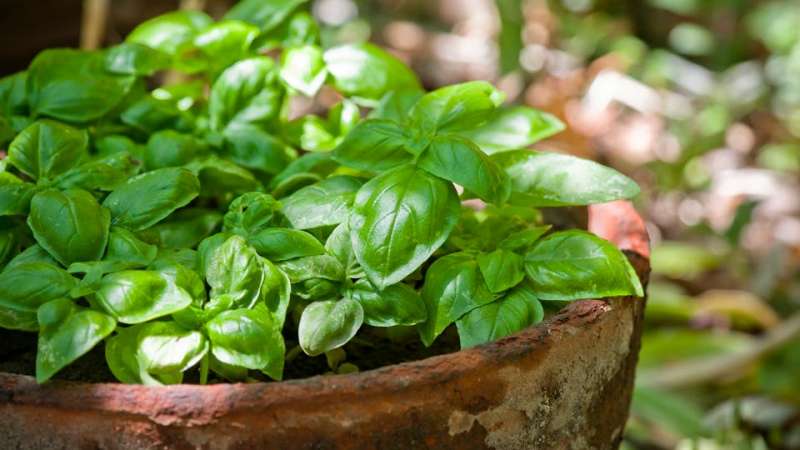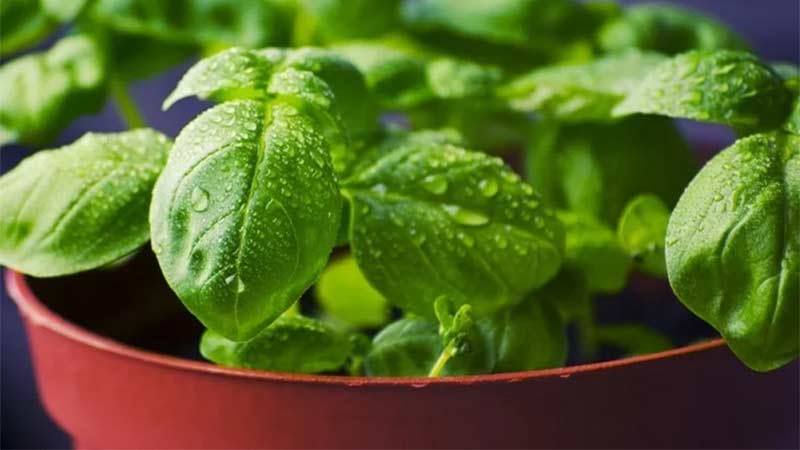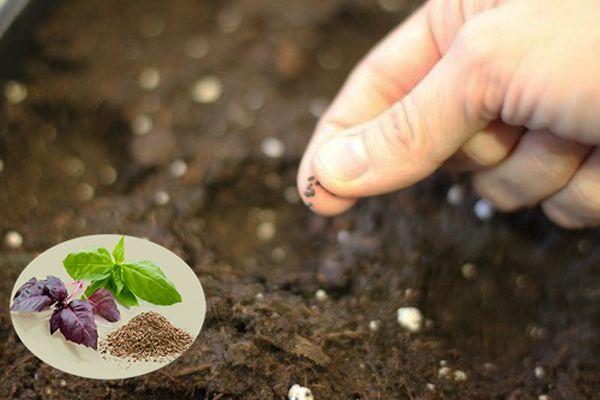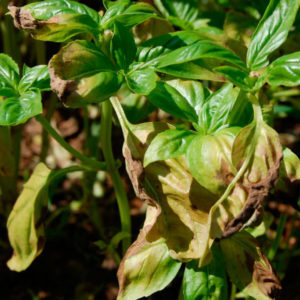Step-by-step instructions for growing basil on a balcony from seeds
Basil prefers warmth. When growing a plant in the cold season, ensuring comfortable temperature conditions is mandatory. This can be done on a balcony or windowsill, observing the rules for growing and caring for basil.
The content of the article
Is it possible to grow basil on the balcony
Basil adapts well to balcony conditions. The main thing is to create a favorable environment - light, warmth, lighting as close as possible to the ideal parameters. If you follow the recommendations and rules, basil will grow on the balcony all year round. To get a good harvest, gardeners recommend sowing new seeds several times a year in order to replace old plants with new, young ones.

The advantages and disadvantages of this method
Cultivating basil on the balcony has several advantages:
- fresh herbs all year round at hand;
- competent selection of "neighbors" creates a beautiful design for the balcony;
- no need to fight weeds, as in a summer cottage.
There are also disadvantages to growing basil:
- an insulated balcony is needed to maintain an optimal temperature regime;
- buying boxes for plants;
- artificial lighting must be turned on and off to create a long daylight hours;
- you cannot leave the house for a long time to avoid freezing, stretching or wilting of the basil in the absence of heat, light and watering, respectively.
Landing dates
The absence of natural negative factors (cold, short daylight hours) allows you to sow basil seeds on the balcony all year round.
Important! To grow basil all year round, the balcony must be well insulated.
Planting basil seeds in March - April will ensure quick and friendly shoots. In February, planting is done if the balcony is well lit.
Optimal growing conditions

Getting a good harvest of basil depends on meeting the requirements for growing conditions:
- growing temperature in winter is + 12 ... + 18 ° С;
- optimal cultivation temperature - + 22 ... + 25 ° С;
- long daylight hours - 15 hours;
- from October to February create additional sources of light and heat (halogen lamps do a good job with this task);
- protect from direct sunlight to avoid burns on the leaves;
- in the autumn-winter period, insulate the pots and protect them from drafts.
Preparation of containers, soil, planting material
Gardeners recommend sowing basil in specially prepared soil: humus, coconut fibers, peat in a 2: 1: 1 ratio. The addition of nutrients - superphosphate or potassium sulfate - has a beneficial effect on the plant. Application rates are indicated on the packaging.
Important!Land from the garden is suitable for planting if it is fertile, light and permeable. It remains to enrich it with minerals.
The container for planting is selected according to the parameters:
- the volume of the pots is 1.5-2 liters;
- depth - from 15 cm and above;
- the ability to plant bushes at a distance of 10 cm from each other.
When choosing planting material, you do not need to stop at one variety. The best solution would be landing different varieties of basil.
When choosing a variety, they focus on the size of the plant and the ripening period. Since there is usually little space on the windowsill, compact varieties are chosen.This allows for uniform illumination for all bushes. In addition, the varieties must have different ripening times. This will ensure a consistent harvest.
Most suitable planting material:
- "Vanilla aroma" - medium early variety (50-60 days) with dark purple leaves.
- "Basilisk". Early maturing (46-50 days). Compact bush with a height of 18-20 cm.
- "Marquis". Ripening period - 65 days. The leaves are green with a clove-pepper smell.
- "Dwarf". A bush 15-20 cm high in the shape of a ball with small spicy leaves.
Growing methods

There are three ways to grow basil on the balcony:
- Transfer from the garden of a young bush.
- Cuttings.
- Seeds.
When grown in the first way, the harvest will be short-lived, since the plant will give part of its strength to growing in the garden.
Harvesting by cuttings takes 2-4 weeks. During this time, the stalk should take root and gain green mass.
Sowing with seeds will provide harvesting for a long time, in comparison with the previous two methods. The return of the crop will occur almost a year after the beginning of ripening.
Growing step by step
Growing a plant from seeds is popular for home conditions. Optimal planting time - March, April.
How to plant seeds

Procedure for planting basil from seeds:
- Soak the seeds for 7-10 hours in water or a growth-stimulating solution, such as Epine.
- Dry the planting material on the fabric.
- Plant in prepared, moist soil. The seeding depth is 1 cm at a distance of 6-8 cm from each other.
- Drizzle with warm water and cover the crops with foil.
- Place the seed container in a dark place.
- Maintain the optimum temperature for seed germination + 23 ... + 28 ° С.
- Remove the film after the first shoots appear. The time from planting to germination is 7-15 days.
Further care
After the first shoots appear you need to ensure proper care of plants:
- maintaining the temperature + 22 ... + 25 ° С;
- choose southern windows for growing or provide additional lighting;
- daily watering with warm, settled water, optimally in the morning;
- loosen the soil every 3-4 days;
- do not allow the growth of the bush upwards, pinch the top after 3-4 pairs of true leaves appear.
Protection against diseases and pests

Despite resistance to adverse factors, basil is subject to diseases:
- Fusarium. Yellow and brown thinned leaves are characteristic. The root system is affected.
- Blackleg. A fungal infection appears on thin stems. The stems turn black and fall off.
- Gray rot... Affected leaves are covered with gray-brown spots. In the future, a white fluff appears.
With an advanced stage of the disease, saving plants does not make sense. If there are healthy cuttings, it is best to grow a new shrub. To do this, separate healthy shoots from a diseased bush. Soak in any fungicidal solution (Bravo, Acrobat, Quadris, etc.). Plant in calcined sand. It is good to use stimulants of the root system "Kornevin", "Zircon".
Preventive measures against diseases and pests:
- before planting, disinfect seeds, pots, soil with a pink solution of potassium permanganate;
- pour drainage on the bottom of the container;
- spray with filtered ash infusion (20-30 g per 1 liter of hot water);
- thin out frequent shoots;
- moderation of watering;
- provide the roots with air by loosening the soil;
- fresh air access, periodic ventilation of the room;
- apply fertilizers.
Collection, storage and use of the crop

The first crop can be harvested when the basil is 15 cm high. The central stem at this height has finished forming and the leaves are ready to be cut. This approach will not harm further plant growth. It is not recommended to break off the leaves so as not to harm the bush.
Reference. Cut off the upper side leaves with scissors without damaging the stem.
Fresh basil greens are used for food. It is good for pizza, salads, soups. It gives a rich rich taste to fish and meat dishes.In canning and pickling vegetables, basil is used as a spice in combination with marjoram, tarragon, rosemary and other herbs.
You can preserve the aroma of fresh leaves as follows:
- place the cut stems in a container with a bouquet;
- pour the stems with water;
- exclude exposure to sunlight;
- store on the table and in the refrigerator;
- shelf life - 10-15 days.
If you close the top of the bouquet with a plastic bag, the shelf life is three weeks.
Useful Tips
Small subtleties will help achieve a good result:
- The key to a good harvest is the drainage layer. Small pebbles, expanded clay, broken brick are suitable for this.
- Before planting, it is convenient to moisten the soil by sprinkling using a spray bottle.
- There is a separate pot for each bush. This will allow for a bountiful harvest.
- On the northern windows, a biolamp (phytolamp) will save you from lack of light.
Conclusion
The cultivation of basil will be successful if you observe a long daylight hours at 15 o'clock, maintain a temperature of + 22 ... + 28 ° C, and moderate watering. Sowing seeds will provide yields throughout the year, and cut stems can be kept fresh for up to three weeks.